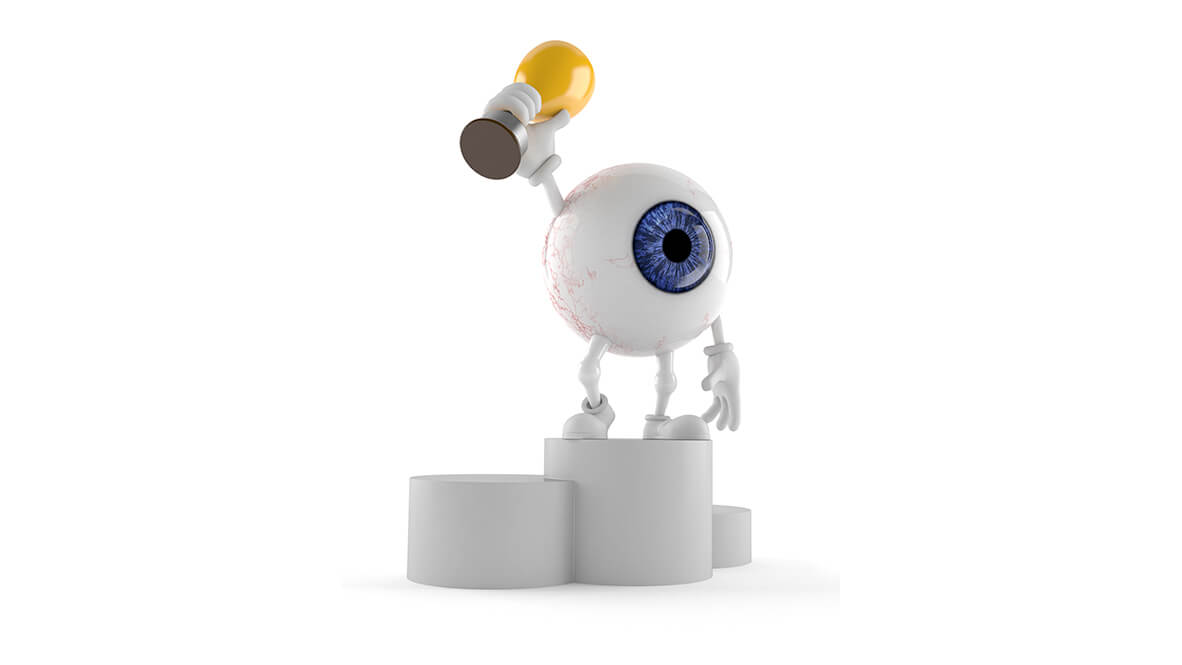Surgery appears to many as a cutting-edge science that only we fortunate, modern folk have access to. Because many surgeries are complex and potentially risky, the concept of people in the distant past performing surgeries seems baffling, if not jaw-droppingly dangerous.
But surgeries have been a part of humanity’s existence since long before history began. Indeed, evidence of trepanning — the practice of removing part of a person’s skull — is found in ancient skulls all over the world dating back to deep prehistory.
Why exactly trepanning was practiced is unclear — some say it was a religious practice to release demons, while others explain it as an attempt to cure long-term headaches. What makes trepanning interesting, however, is that patients on the receiving end of a trepanner’s procedure regularly survived and recovered.
So it should come as no surprise that diseases and maladies of the eye have forever been a major concern of both patients and doctors. To make a gross understatement, vision is important to people — and many with poor eyesight or eye problems would be willing to attempt treatments.
And, yes, ophthalmology and full descriptions of the eye’s anatomy have their roots in the distant past as well. Two notable physicians in the middle ages made significant contributions to the field of ophthalmology, and both inhabited parts of the scientifically advanced Islamic world of the middle ages.
Hunayn ibn Ishaq and the First Book on Ophthalmology
The first known textbook on ophthalmology was written by Hunayn ibn Ishaq in the 9th century A.D. Specifically when it was written is not entirely known, but one can deduce that it was written in the middle decades of the century.
Hunayn ibn Ishaq was an Assyrian Christian living in the then-powerful Abbasid Caliphate, which attracted scholars and intellectuals from all over the world. Many ancient works from Greek and Latin were translated into Arabic, and the work of physicians from antiquity was continued in the Eastern world, while the Catholic west languished scientifically.
Ibn Ishaq’s book, Book of the Ten Treatises of the Eye, explores the eye in great detail — its anatomy, diseases, symptoms and treatments. Written essentially as a textbook, it was likely used by physicians throughout the region — though to what effect is not well documented.
The Book also provided a framework of understanding of the eye — which, itself, is essentially irrelevant and certainly obsolete, as it relied on an incomplete understanding of the eye itself. For example, ibn Ishaq believed that the exact center of the eye was a spherical crystalline lens — in contrast to previous physicians such as Galen, who believed in a more mathematically-oriented flat lens. Ibn Ishaq’s view persisted for centuries until a more modern understanding of physiology began to emerge.
Ibn Ishaq also created a philosophy around vision, associating the sense with fire and attempting to explain just how the eyes allowed vision. It’s interesting to note that the question of exactly how the eye was tied to vision baffled philosophers and physicians alike for centuries, and ibn Ishaq was no different.
Ibn Ishaq’s contributions to the field of ophthalmology represent the crucial early steps of any scientific discipline: the attempt to analyze and understand individual components of something to get at the root of just how it works and why it works.
Al-Zarahwi: Father of Cataract Surgery
Any discussion of medieval medicine would be incomplete without a mention of Abu al-Qassim Khalaf ibn al-Abbas al-Zarahwi al-Ansari. Given that you’d need to take a breath every time you said his name, we can simply refer to him as al-Zarahwi, as most do.
Born around 936 A.D., Al-Zarahwi lived in the Andalusian city of Cordoba most of his life, which at that time was the capital of Muslim Spain. He’s widely considered the most important physician of the middle ages. His chief work, the Kitab al-Tasrif, was completed around 1000 A.D. A 30-volume tome of medical practice, it was widely used for centuries after his death and is considered one of the most important medical texts ever written.
His chief contribution to the field of ophthalmology was his analysis and instruction for cataract surgeries, which included descriptions of surgical tools.
A translation of his description can be found here, but for the reader’s sake, below is his translated description:
“Patient has to be seated directly in front of the sunshine, while his normal eye is completely covered, if his left eye has to be treated, hold his eyelid up with your left hand. Then put the needle to the border of iris adjacent to the corneoscleral limit. Now push and twist the needle until getting inside the eyeball then you feel that it is gone into an empty space. You will see the needle in the centre of the pupil because of corneal transparency. Now hold the needle where the cataractous lens has been formed and push the needle down a few times. If all parts of the lens are discharged, the patient can see while the needle is still in his eye. If not, push down the needle once more, then bring back the needle to its original place in the anterior chamber and then turn the needle gently and pull it out. Now dissolve Turkish salt in water and wash the eye then put a clean cotton pad coated with white egg, rose water and oil on the eye and cover both eyes with the pad.
“In some cases when the eyeball is resistant and hard, and the needle is not able to be inserted we should use a special surgery needle. Patient has to lay down on his back in a stable bed in a dark room and he should avoid moving or coughing. He should be given soft food not to turn his head to the right or left side. His eye bandage on his eyes has to be kept for 3-7 days. Bandage has to be open in a dark room while examining the eyes by showing the patient some objects. Then put the bandage back again and leave the patient for some days.”
As you can see, the procedure was quite complex and relied on tools and ingredients available at the time. For cataract sufferers, such a procedure must have been near-magical if effective.
Standing on the Shoulders of Giants

It’s easy to look back at the past and marvel that anything surgical at all managed to get accomplished. While we would certainly not use their methods these days — barring, say, societal collapse or being lost in the jungle — we must appreciate their origins.
Without pivotal early works such as these, we would not be where we are today. And, sometime in the future, physicians will look back at the work we are doing now and feel the same degree of appreciation and wonder that we were able to accomplish anything at all.
Isaac Newton once said, “If I have seen further than others, it is because I stand on the shoulders of giants.” He was referring, of course, to the great thinkers that had come before him. Ibn Ishaq and Al-Zarahwi are the giants whose shoulders ophthalmologists stand on; may we continue to produce our own so ophthalmologists in the future may continue to see further.



